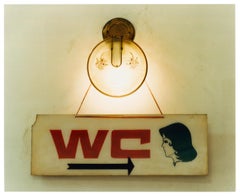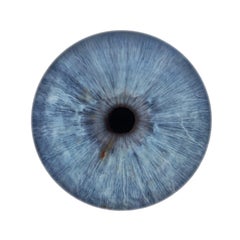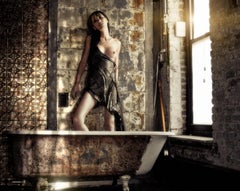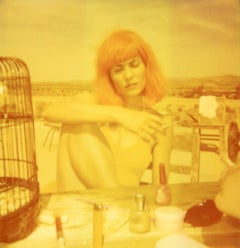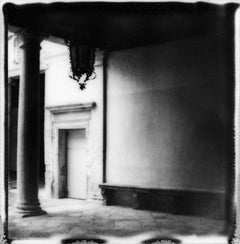Photographic Paper Photography
21st Century and Contemporary Pop Art Photographic Paper Photography
Photographic Paper, C Print, Color, Silver Gelatin
2010s Contemporary Photographic Paper Photography
Photographic Paper, C Print, Color, Silver Gelatin
21st Century and Contemporary Contemporary Photographic Paper Photography
Plexiglass, Photographic Film, Archival Ink, Archival Paper, Photographi...
2010s Contemporary Photographic Paper Photography
Photographic Paper, Archival Pigment, Color
Early 2000s Contemporary Photographic Paper Photography
Photographic Paper, C Print, Polaroid, Archival Paper
21st Century and Contemporary Contemporary Photographic Paper Photography
Photographic Film, Archival Ink, Photographic Paper, Giclée
2010s Photographic Paper Photography
Photographic Paper
1980s Contemporary Photographic Paper Photography
Photographic Paper
2010s Photographic Paper Photography
Photographic Paper
2010s Contemporary Photographic Paper Photography
Archival Paper, C Print, Color, Polaroid, Photographic Paper
21st Century and Contemporary Contemporary Photographic Paper Photography
Photographic Paper, Digital Pigment
20th Century American Modern Photographic Paper Photography
Photographic Paper, C Print, Color, Digital
Early 2000s Pop Art Photographic Paper Photography
Photographic Paper, C Print, Color, Silver Gelatin
Late 18th Century Photographic Paper Photography
Photographic Paper
2010s Photographic Paper Photography
Photographic Paper
2010s Contemporary Photographic Paper Photography
Photographic Paper, C Print, Color, Silver Gelatin
2010s Contemporary Photographic Paper Photography
Photographic Film, Archival Ink, Photographic Paper, C Print, Digital, G...
20th Century American Modern Photographic Paper Photography
Photographic Paper, Color, C Print, Digital
2010s Contemporary Photographic Paper Photography
Photographic Paper, C Print, Color, Silver Gelatin
1960s Contemporary Photographic Paper Photography
Photographic Paper
21st Century and Contemporary Contemporary Photographic Paper Photography
Photographic Paper
2010s Contemporary Photographic Paper Photography
Archival Paper, Photographic Paper, C Print, Color, Polaroid
21st Century and Contemporary Contemporary Photographic Paper Photography
Plexiglass, Wood, Photographic Film, Archival Paper, Photographic Paper
2010s Photographic Paper Photography
Photographic Paper
2010s Photographic Paper Photography
Photographic Paper
1990s Contemporary Photographic Paper Photography
Photographic Paper, C Print
1980s Contemporary Photographic Paper Photography
Archival Paper, Black and White, Archival Pigment, Photographic Film, Pi...
2010s Photographic Paper Photography
Photographic Paper
21st Century and Contemporary Contemporary Photographic Paper Photography
Archival Ink, Archival Paper, Photographic Paper, Giclée, Archival Pigment
2010s Contemporary Photographic Paper Photography
Photographic Paper, C Print, Color, Silver Gelatin
2010s Contemporary Photographic Paper Photography
Archival Paper, Photographic Paper, C Print, Color, Polaroid
1960s Contemporary Photographic Paper Photography
Photographic Paper
2010s Contemporary Photographic Paper Photography
Photographic Paper, C Print
2010s Photographic Paper Photography
Photographic Paper
2010s Contemporary Photographic Paper Photography
Archival Paper, Photographic Paper, C Print, Color, Polaroid
Early 2000s Contemporary Photographic Paper Photography
Archival Ink, Archival Paper, Photographic Paper, Black and White, Giclé...
2010s Contemporary Photographic Paper Photography
Archival Paper, Photographic Paper, C Print, Color, Polaroid
2010s Photographic Paper Photography
Photographic Paper
2010s Contemporary Photographic Paper Photography
Archival Paper, Photographic Paper, C Print, Color, Polaroid
21st Century and Contemporary Contemporary Photographic Paper Photography
Photographic Paper
2010s Old Masters Photographic Paper Photography
Photographic Paper, Giclée
2010s Contemporary Photographic Paper Photography
Archival Paper, Photographic Paper, C Print, Color, Polaroid
1990s Contemporary Photographic Paper Photography
Archival Paper, Photographic Paper, C Print, Color, Polaroid
21st Century and Contemporary American Modern Photographic Paper Photography
Plexiglass, Photographic Paper
2010s Contemporary Photographic Paper Photography
Archival Paper, Photographic Paper, C Print, Color, Polaroid
2010s Contemporary Photographic Paper Photography
Archival Paper, Photographic Paper, C Print, Color, Polaroid
21st Century and Contemporary Contemporary Photographic Paper Photography
Photographic Paper, Digital, C Print
2010s Contemporary Photographic Paper Photography
Archival Paper, Photographic Paper, C Print, Color, Polaroid
2010s Photographic Paper Photography
Photographic Paper
2010s Contemporary Photographic Paper Photography
Archival Paper, Photographic Paper, C Print, Color, Polaroid
21st Century and Contemporary Surrealist Photographic Paper Photography
Photographic Paper
Early 2000s Contemporary Photographic Paper Photography
Archival Paper, Photographic Paper, C Print, Color, Polaroid
21st Century and Contemporary Contemporary Photographic Paper Photography
Photographic Paper, Giclée, Archival Pigment, Archival Ink, Archival Paper
2010s Photographic Paper Photography
Photographic Paper
1990s Contemporary Photographic Paper Photography
Archival Paper, Photographic Paper, C Print, Color, Polaroid
21st Century and Contemporary Contemporary Photographic Paper Photography
Archival Ink, Archival Paper, Photographic Paper, Giclée, Archival Pigme...
1980s Contemporary Photographic Paper Photography
Photographic Film, Archival Paper, Photographic Paper, Black and White, ...
1980s Contemporary Photographic Paper Photography
Photographic Paper
21st Century and Contemporary Pop Art Photographic Paper Photography
Photographic Paper, C Print, Color, Silver Gelatin
2010s Contemporary Photographic Paper Photography
Archival Paper, Photographic Paper, C Print, Color, Polaroid
Photographic Paper photography for sale on 1stDibs.
Read More
Welcome to the Surreal and Sensual World of Mona Kuhn
The photographer made her name shooting luminous nudes. Her latest works reframe what an image can hold.
This Twiggy and David Bowie Photo Has an Unusual Backstory
The photo shoot for an ill-fated British 'Vogue' cover brought the two British icons together.
Marianne Faithfull in Photos
The late ’60s it girl was beloved for her personal style as well as her artistic talents.
This Week-Old Calf Named Bug Is One of Randal Ford’s Most Adorable Models
In a recent collection of animal portraits, he brings fashion photography to the farm.
Elton John Is a Fan of this Richard Caldicott Tupperware Photo
Using a creative analog process, the British artist transformed the plastic containers into gleaming, minimalist abstractions and developed an illustrious fan base along the way.
Some of the Best Beatles Photos Were Taken by Paul McCartney
A trove of recently unearthed personal photos adds another dimension to the abundance of press images of the Fab Four.
Photographer to Know: Rinko Kawauchi
From toddlers playing to fires blazing, the Japanese lenswoman poetically captures fleeting dramas on planet Earth.
Photographer Jerry Schatzberg Remembers a Legendary Shoot with Bob Dylan
The acclaimed lensman and the folk-rock phenomenon clicked, and a captivating portrait followed.
